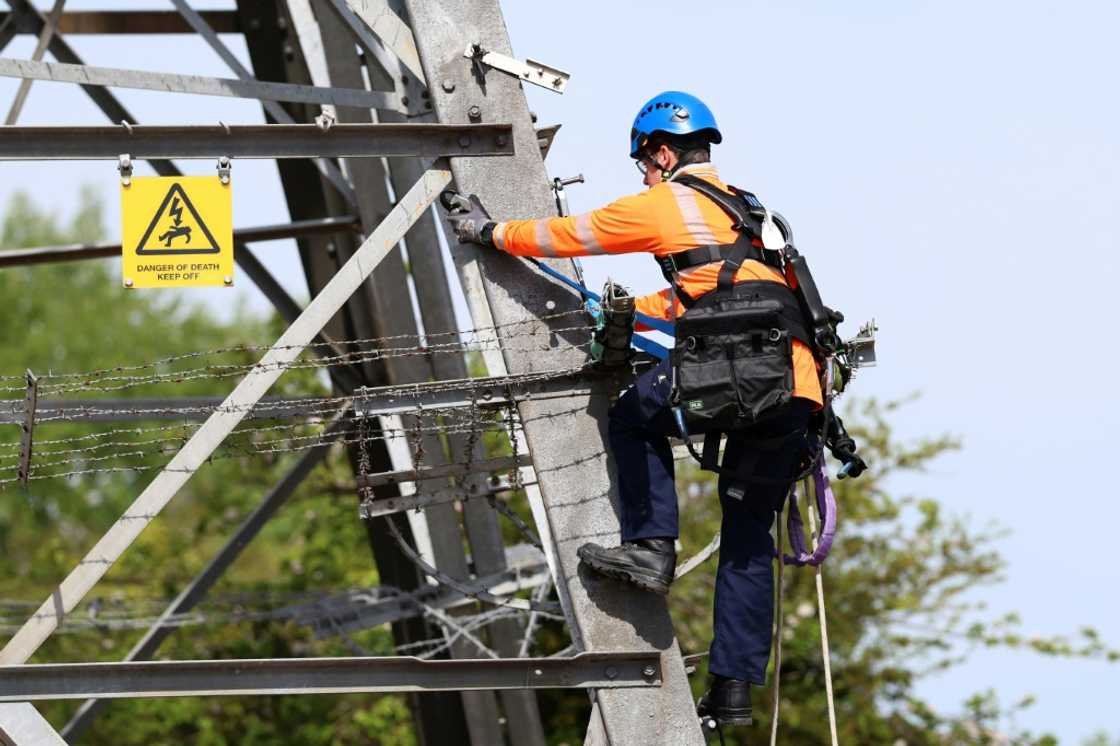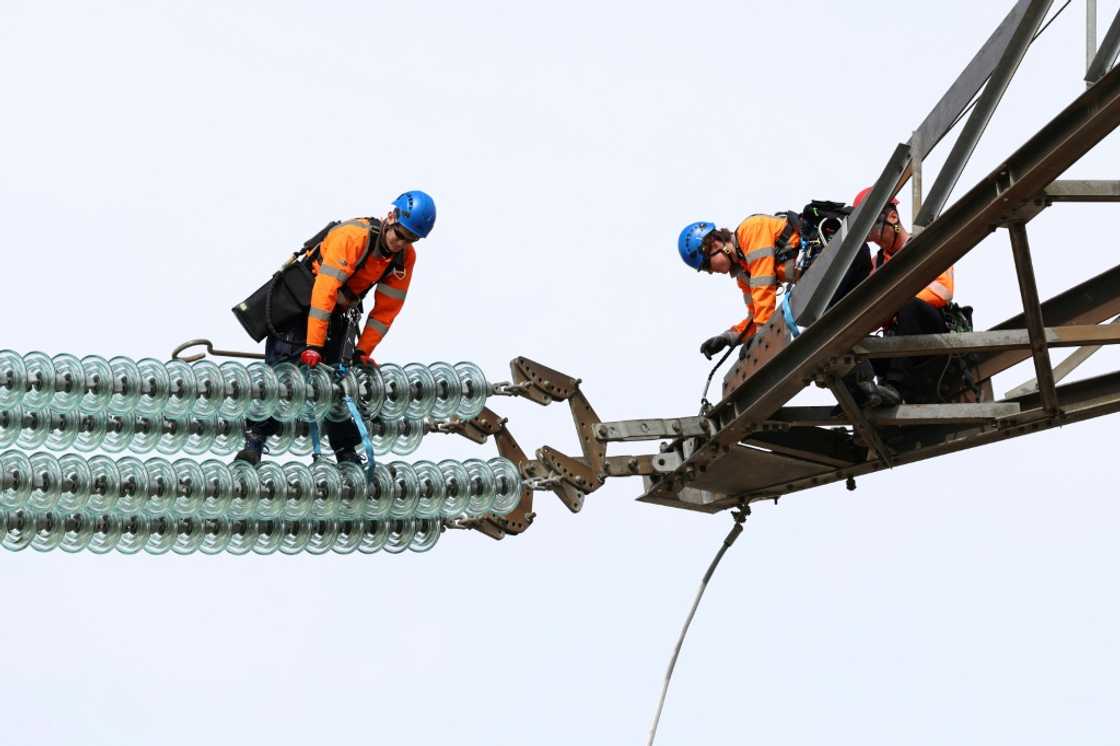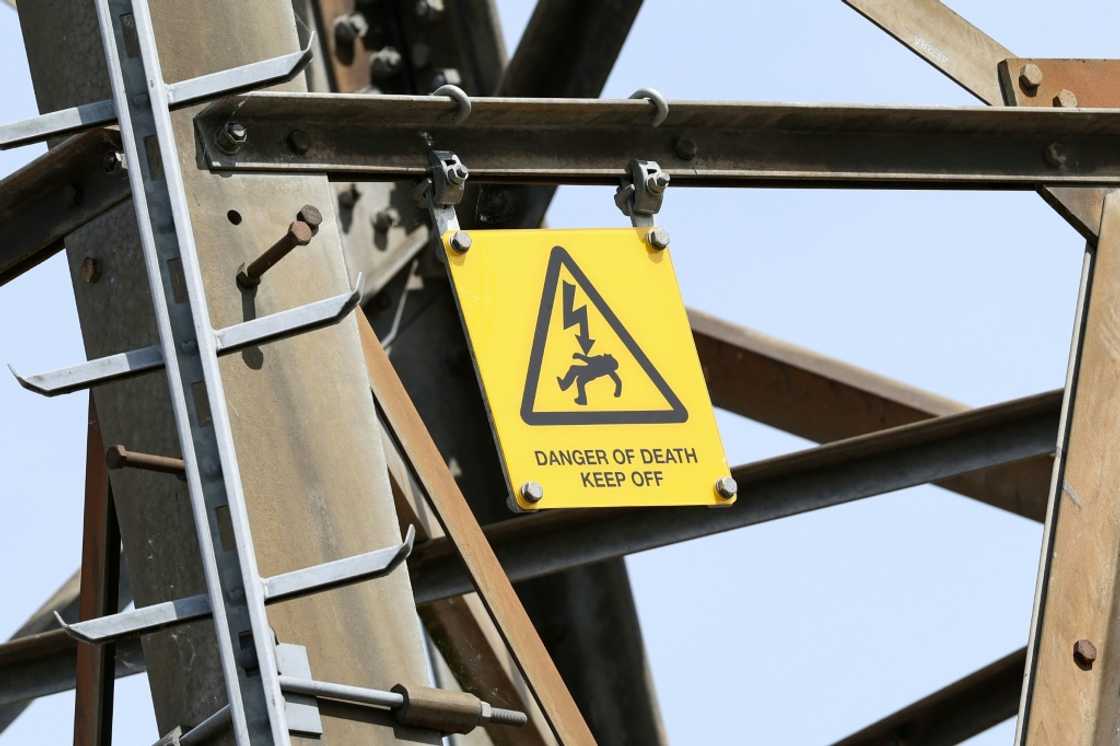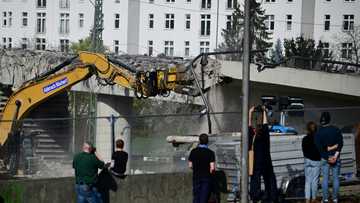High-flying young electricians wire UK energy switch

Source: AFP
Perched 45 metres (148 feet) high, young apprentice electricians replace a connection atop a pylon. In the UK, National Grid recruitment is at full power as its electricity network adapts for renewables.
As new production sites multiply, particularly for wind and solar power, the privately-run company that owns the high-voltage pylons and cables in England and Wales said it is implementing "the largest overhaul of the electricity grid in generations".
"It's quite fun and exciting really," Becky Hodgson, an overhead lines trainee, enthused at the prospect of "connecting" the UK's future energy needs.
At the National Grid training centre in Eakring, a village in central England, 25-year-old Hodgson unwinds rope from a winch at the foot of a large pylon.
To the sound of an engine and pulleys, a suspended walkway rises towards her classmates.
Hailing from near Newcastle in northeast England, a region famous for its coal mining heritage, Hodgson is delighted to be part of the nation's new energy chapter.
"It's ticking all the boxes for me," said the apprentice whose grandfather mined coal, which up until recently was used to fire British power stations.
"From a young age I've always been really into climbing, and adventurous pursuits," Hodgson, sporting a fluorescent orange vest and blue hard hat, told AFP.
'Massive challenge'

Source: AFP
With the UK one of the most advanced countries in Europe in terms of renewable energy, National Grid plans to invest £35 billion ($47 billion) by 2031 to transform its electricity network.
The installation of new pylons, often favoured over underground or submarine cables owing to their lower cost, is causing friction among local residents across the country.
Faced with growing demand for electricity and the need to source energy where it is produced, "we need more wires", insisted Zac Richardson, chief engineer at National Grid.
The company has seen the number of training days surge 75 percent over three years, driven largely by growth in staff.
"Will we be able to train enough? It's a massive challenge," said Richardson.
"There's advanced investment going in, not just here, but with our key contractors as well, to ensure that the workforce is ready."
National Grid estimates that 55,000 new hires will be needed in the coming years, across various trades, both within its own ranks and among its partners and subcontractors.
Explosion

Source: AFP
A siren suddenly sounds in a substation, close to large machines bristling with lightning arresters.
Then an explosion -- signalling a test of a pyrotechnic circuit breaker, a device that can quickly cut a high-voltage circuit.
"You have to cover your ears automatically... when you work in a substation," laughed Lara Eken, a graduate substation engineer.
The 23-year-old said she has come to learn about the workings of "a really in-depth technical system", whose number is multiplying with the expansion of the network.
Cables extending from the large pylon are lost in the distance -- but they lead nowhere. For safety reasons, the training facilities are disconnected from the network.
A power line apprenticeship lasts three years.
"Everything crunches around the safety aspect first, so it's baby steps," training instructor Tom Norris, easily identifiable by his red helmet, told AFP.
"You get them just climbing the tower first" before tackling more complicated tasks like hoisting equipment, he added.
Norris said finding recruits is not a problem.
"We're taking on more apprentices than we ever have. We've always got lots of interest on the recruitment day so we're picking from lots and lots of good candidates."
Source: AFP





